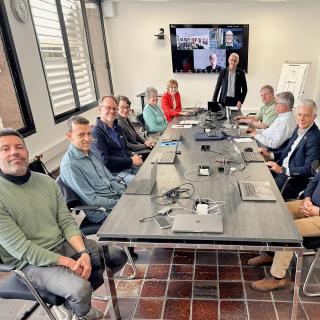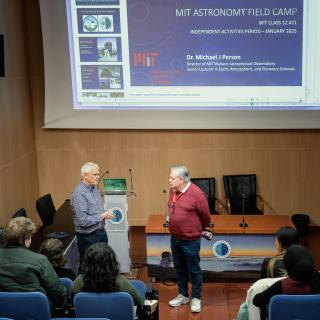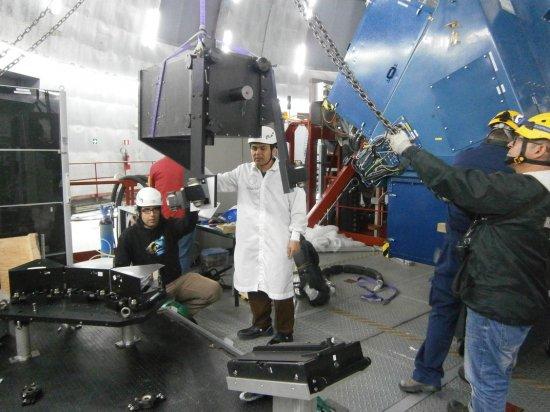It may interest you
-
 From Thursday, May 8th, to Friday, May 9th, the Canary Islands Institute of Astrophysics (IAC) is hosting the meeting of the Research Advisory Committee (CAI). This is the center's highest advisory body on research and analyzes its scientific and technological output. At this meeting, the director, Valentín Martínez Pillet, will present the center's main scientific and technological milestones, as well as a proposal for future lines of action. The director will also be joined by Eva Villaver, deputy director of the IAC; Romano Corradi, director of Gran Telescopio Canarias; Jonay GonzálezAdvertised on
From Thursday, May 8th, to Friday, May 9th, the Canary Islands Institute of Astrophysics (IAC) is hosting the meeting of the Research Advisory Committee (CAI). This is the center's highest advisory body on research and analyzes its scientific and technological output. At this meeting, the director, Valentín Martínez Pillet, will present the center's main scientific and technological milestones, as well as a proposal for future lines of action. The director will also be joined by Eva Villaver, deputy director of the IAC; Romano Corradi, director of Gran Telescopio Canarias; Jonay GonzálezAdvertised on -
 A team of astronomers led by ICE-CSIC analyzed for the first time a long radio-observation of a scallop-shell star in a pioneer study. The team observed the star using the Giant Metrewave Radio Telescope (GMRT) located in Pune (India), and related it to the photometric information from NASA’s Transiting Exoplanet Survey Satellite (TESS) and Las Cumbres Global Telescope Observatory. Scallop-shell stars are a recently discovered class of young M dwarfs. More than 70% of the stars in the Milky Way are M dwarfs, although there are only around 50 recently confirmed scallop-shell stars. They showAdvertised on
A team of astronomers led by ICE-CSIC analyzed for the first time a long radio-observation of a scallop-shell star in a pioneer study. The team observed the star using the Giant Metrewave Radio Telescope (GMRT) located in Pune (India), and related it to the photometric information from NASA’s Transiting Exoplanet Survey Satellite (TESS) and Las Cumbres Global Telescope Observatory. Scallop-shell stars are a recently discovered class of young M dwarfs. More than 70% of the stars in the Milky Way are M dwarfs, although there are only around 50 recently confirmed scallop-shell stars. They showAdvertised on -
 This January, the Instituto de Astrofísica de Canarias is hosting, for the third time, the ‘ MIT Astronomy Field Camp’, the historic scientific camp that the Massachusetts Institute of Technology (MIT) offers to its students of planetary sciences and astronomy with the aim of providing them with the real experience of working in a professional observatory. On this occasion, nine students have been at the Teide Observatory, in Tenerife, since 7th January, where they have carried out various astronomical observations. Dr. Michael Person has been the coordinator of this activity that began inAdvertised on
This January, the Instituto de Astrofísica de Canarias is hosting, for the third time, the ‘ MIT Astronomy Field Camp’, the historic scientific camp that the Massachusetts Institute of Technology (MIT) offers to its students of planetary sciences and astronomy with the aim of providing them with the real experience of working in a professional observatory. On this occasion, nine students have been at the Teide Observatory, in Tenerife, since 7th January, where they have carried out various astronomical observations. Dr. Michael Person has been the coordinator of this activity that began inAdvertised on
